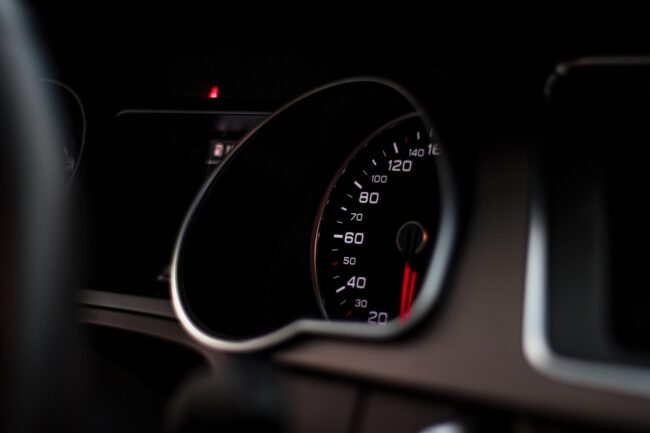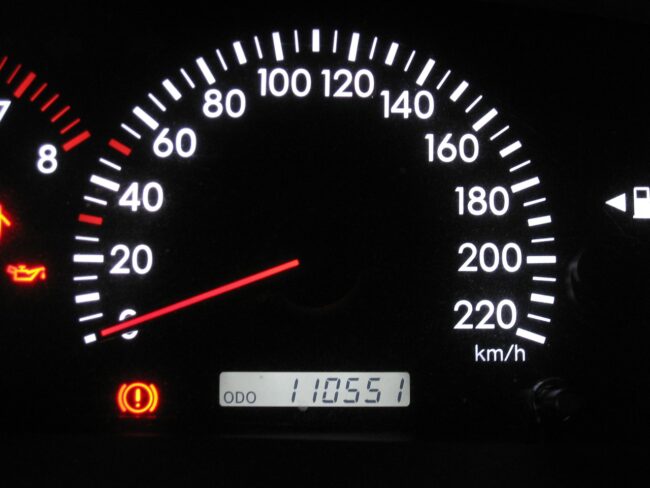
It is vital to determine how to calculate engine hours to miles. While engine hours are primarily used to determine the maintenance schedule and overall health of the engine, it is also important to convert these engine hours to miles for various purposes. Converting engine hours to miles allows you to correctly estimate the total mileage which is useful for tracking fuel efficiency, calculating maintenance intervals, and assessing overall wear and tear on your vehicle. This helps you determine what your vehicle needs.
Why It Is Important to Convert Engine Hours to Miles
It is important to know how to calculate engine hours to miles for determining the fuel efficiency of your vehicle.Converting engine hours to miles is vital for scheduling maintenance Services.Most manufacturers recommend servicing vehicles based on either mileage or engine hours, whichever comes first.
Factors Affecting Engine Hours to Miles Conversion
Several factors can influence the conversion of engine hours to miles.The most significant factor is the type of vehicle you own.Different vehicle types, such as cars, trucks, motorcycles, or boats, have unique engine hour to mile conversion rates.This is due mostly to differences in engine design, power output, and operating conditions.Another factor to consider is the engine’s running speed.Engines running at higher RPMs generally cover more distance in a given amount of time compared to engines running at lower RPMs.Therefore, the conversion factor for engine hours to miles may vary depending on the average running speed of the engine.Furthermore, the terrain and driving conditions can also impact the conversion.
Vehicles operating in hilly or rough terrains may cover fewer miles per engine hour compared to vehicles driving on flat, smooth roads.Similarly, vehicles frequently subjected to stop-and-go traffic, such as city driving, may have a different conversion rate than vehicles primarily used for highway driving.You should take these factors into consideration if you want to ensure accurate engine hour to mile conversion.

Calculating Engine Hours to Miles for Different Types of Vehicles
Calculating engine hours to miles requires specific formulas tailored to different vehicle types.
Here are the methods for calculating engine hours to miles for various vehicles:
Cars: For cars, the most common method is to use the average speed of the vehicle.Multiply the engine hours by the average speed in miles per hour to get the approximate distance traveled.
Trucks: Trucks typically have different engine hour to mile conversion rates depending on their size and load capacity.Consult the manufacturer’s specifications or the vehicle’s manual to find the appropriate conversion factor for your truck.
Motorcycles: Motorcycles often have higher RPMs compared to cars or trucks.To convert engine hours to miles for motorcycles, multiply the engine hours by the average speed in miles per hour, taking into account the higher RPMs.
How to calculate engine hours to miles?
There are several methods you can use to calculate engine hours to miles.The most straightforward method involves manually tracking the engine hours and recording the corresponding mileage at specific intervals.By dividing the total mileage by the engine hours, you can determine the average miles per engine hour.
There are also external devices and software that can track engine hours and calculate the equivalent mileage. Regardless of the method you choose, it is essential to regularly monitor and update the engine hours and mileage records to ensure accurate calculations.
Main Challenges and Considerations
Calculating engine hours to miles is not without its challenges.
Here are some common challenges and considerations to keep in mind:
Idle Time: Engine hours can accumulate even when the vehicle is stationary or idling.It is crucial to account for this idle time and consider it when calculating the engine hour to mile conversion.
Maintenance and Repair: Any time spent on maintenance or repair tasks should not be included in the engine hour to mile conversion.Make sure to exclude the hours when the engine is not actively running, as it may skew the accuracy of the conversion.
Variable Speeds: If your vehicle operates at varying speeds, it is important to consider this variability when calculating engine hours to miles.Use an average speed that represents the typical conditions under which the vehicle is driven.
Conversion Rate Updates: As your vehicle ages or undergoes modifications, the engine hour to mile conversion rate may change.
You can overcome any inaccuracies and assure dependable engine hour to mile conversions by addressing these issues and factors.
Tools and Resources for Converting Engine Hours to Miles Accurately
Fortunately, a variety of tools and information are available to assist you in precisely converting engine hours to miles.
Onboard Vehicle Computers:
Many modern vehicles come equipped with sophisticated onboard computers that track engine hours and miles. These systems provide accurate conversion data and eliminate the need for manual calculations.
External Devices:
There are external devices available that can be connected to your vehicle’s diagnostic port to track engine hours and calculate miles.
Manufacturer’s Specifications:
Consult your vehicle’s manual or contact the manufacturer for accurate conversion rates specific to your vehicle. The manufacturer’s specifications are often the most reliable source of information. By that you can ensure precise and hassle-free engine hour to mile conversions.

Benefits of Accurately Calculating Engine Hours to Miles
Accurately calculating engine hours to miles offers several benefits:
Improved Maintenance Planning. By knowing the exact distance covered by your vehicle. You can plan maintenance tasks more effectively.
Optimized Fuel Efficiency: Converting engine hours to miles allows you to calculate the fuel consumption rate accurately. When you pay attention to fuel efficiency, you can easily identify if something is wrong.
Enhanced Vehicle Performance: Accurate engine hour to mile conversions enable you to track the overall performance of your vehicle.
How can I test my automobile?
The kilometer stopper from the Super kilometer filter is the best option when it comes to testing the automobile in a controlled environment. It is a simple plug-and-play tool. You do not need soldering or cutting cables. Additionally, it filters out mileage data and blocks any further information from being transferred to other control units. This is what made it completely untraceable. At Super Kilometer Filter, they ensure the reliability of the product and give you a guarantee that altered information remains undiscoverable at any rate.
Takeaway
Whether you choose to use onboard vehicle computers, external devices, or mobile applications, the key is regularly monitoring. Update engine hours and mileage records for reliable conversions.
In conclusion, understanding how to calculate engine hours to miles is an essential skill for any automobile enthusiast or vehicle owner.
Latest Posts
- 1
- 2
Is Buying a Car with Over 100k Miles a Good Idea?
April 10, 2024 - 3
Why Are High Mileage Cars So Expensive? – A Guide
April 5, 2024 - 4
Where Is The Mileage Located In A Car?
April 3, 2024 - 5
Whats High Mileage in Vehicles?
March 29, 2024 - 6
What’s The Gas Mileage On A Smart Car: A Comprehensive Guide
March 27, 2024 - 7
At What Mileage Should You Sell Your Car?
March 22, 2024 - 8
Should You Buy a Car with Over 100k Miles?
March 20, 2024 - 9
Should You Buy a Car with 100k Miles?
March 15, 2024 - 10
Understanding ODO Meaning in a Car
March 13, 2024








